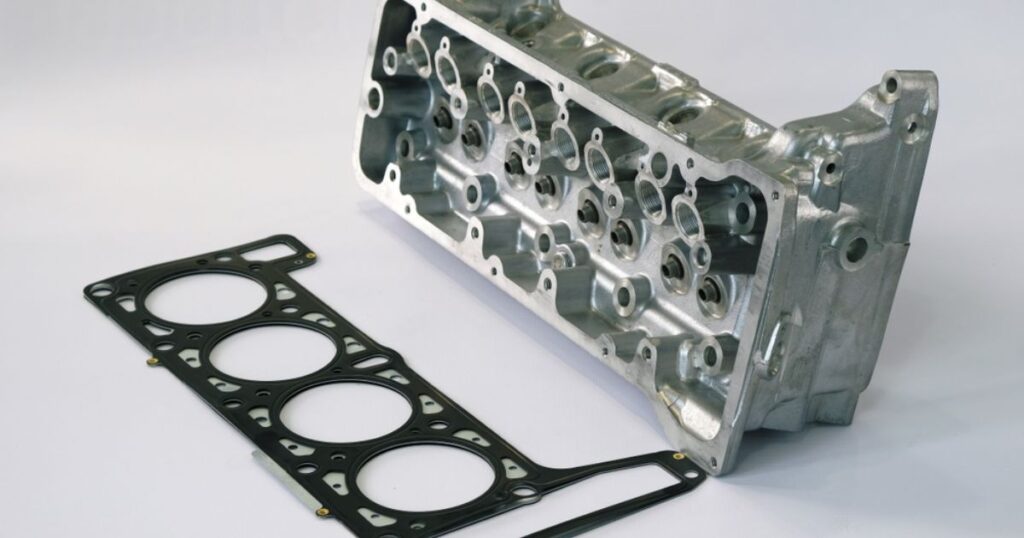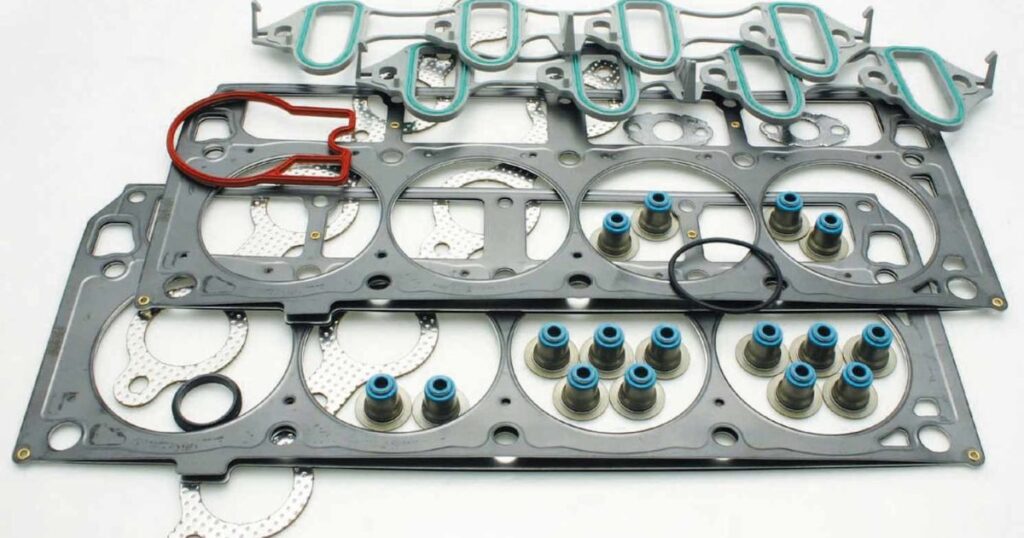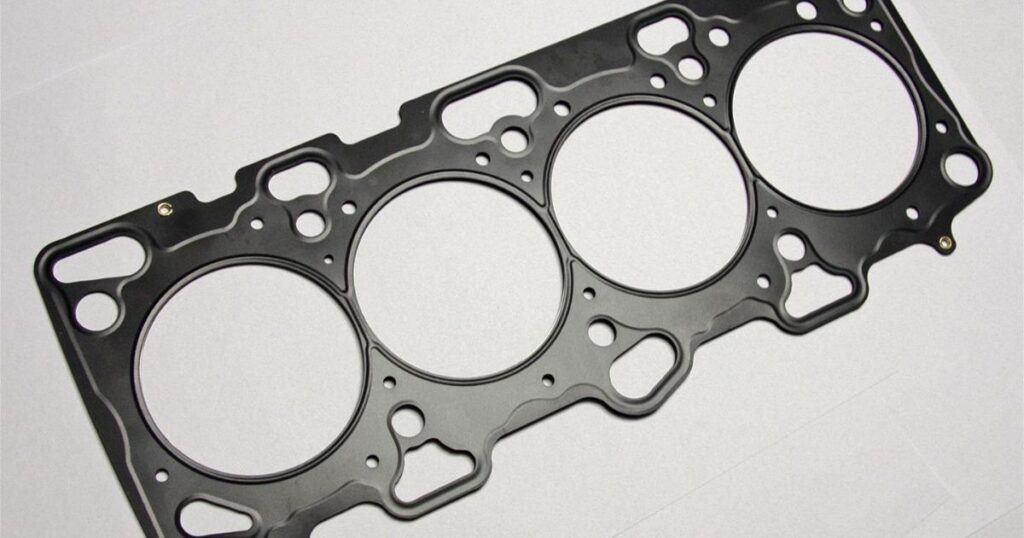Your car’s engine is complex machinery, with numerous components working together to generate power and keep your vehicle running smoothly. The head gasket plays a vital role among these components, yet it often remains a mystery to many drivers.
In this comprehensive guide, we’ll demystify the head gasket, exploring its functions, common causes of failure, and the importance of addressing any issues promptly.
The Head Gasket’s Role in Your Vehicle’s Engine

Located between the cylinder head and the engine block, the head gasket acts as a seal, enabling the proper circulation of coolant and oil throughout the engine. Its primary responsibilities include:
- Sealing the combustion chamber: The head gasket ensures that the high pressure created during the combustion process remains contained within the combustion chamber, preventing leaks and maintaining engine efficiency.
- Separating coolant and oil passages: While coolant and oil are essential for keeping your engine running at optimal temperatures and lubricated, they must remain separated. The head gasket prevents these fluids from mixing, which could lead to contamination and potential engine damage.
- Enabling proper circulation: The head gasket allows coolant and oil to circulate freely by sealing the various passages within the engine, ensuring that all components receive the necessary lubrication and cooling.
The head gasket is crucial in maintaining engine compression and power output, making it an indispensable component for your vehicle’s performance and longevity.
Modern Head Gasket Materials and Design
In the past, head gaskets were often made from materials like asbestos or graphite, which posed potential health risks and were prone to leakage over time. However, modern head gaskets have undergone significant advancements in materials and design.
Today’s head gaskets are typically composed of multiple layers of steel material entwined with an elastomer (a rubber-like polymer). This composite construction offers several advantages:
| Material | Advantages |
| Steel | Increased durability and resistance to high temperatures |
| Elastomer | Improved sealing capabilities and flexibility |
Additionally, the layered design allows for better distribution of the clamping force, ensuring a more effective seal and reducing the risk of leaks or failures.
Compared to their predecessors, modern head gaskets are safer, more durable, and longer-lasting, providing improved vehicle performance and reliability.
Common Causes of Head Gasket Failure
While head gaskets are designed to withstand the demanding conditions within an engine, there are several factors that can contribute to their failure. The most common causes include:
- Overheating: Excessive engine temperatures are often the primary culprit behind a blown head gasket. Other issues can cause this, such as coolant leaks, a faulty thermostat, or a malfunctioning cooling system.
- Thermal expansion: As metals heat up, they expand. If the engine gets too hot, the cylinder head and block can expand at different rates, causing the head gasket to become distorted or dislodged, compromising its seal.
- Age and wear: Like any other component, head gaskets can degrade over time and with extensive mileage. Regular maintenance and timely replacement can help prevent failures due to wear and tear.
It’s important to note that neglecting these issues can lead to catastrophic consequences for your engine, making it crucial to address any potential problems promptly.
Telltale Signs of a Blown Head Gasket
If your head gasket fails, it can manifest in several ways. Keep an eye out for these telltale signs:
- Overheating: A blown head gasket can cause coolant to leak into the combustion chambers, leading to overheating issues and potentially damaging your engine.
- White, blue, or grey exhaust smoke: If you notice colored smoke coming from your exhaust, it could indicate that coolant or oil has entered the combustion chamber, a clear sign of a blown gasket.
- Loss of power: When the head gasket fails, it can compromise the engine’s ability to maintain proper compression, resulting in a noticeable loss of power, sputtering, and reduced fuel efficiency.
- Discolored engine oil: If coolant mixes with your engine oil, it can take on a milky or chocolate milk-like appearance, a surefire indicator of a blown head gasket.
“A blown head gasket is like a tiny leak that can quickly turn into a catastrophic flood if left unchecked,” says John Smith, a seasoned mechanic with over 20 years of experience.
If you notice any of these symptoms, it’s crucial to address the issue promptly to prevent further damage to your engine.
The Consequences of Ignoring a Blown Head Gasket
While a blown head gasket may seem minor, ignoring it can have severe and costly consequences for your vehicle. Continuing to operate with a failed head gasket can lead to:
- Warped cylinder heads: The extreme temperatures and pressures within the engine can cause the cylinder heads to warp or crack, requiring expensive repairs or replacements.
- Damaged pistons and cylinders: Coolant entering the combustion chambers can damage the pistons and cylinder walls, potentially necessitating an entire engine rebuild or replacement.
- Complete engine failure: In severe cases, a neglected blown head gasket can result in catastrophic engine failure, rendering your vehicle inoperable and requiring a costly engine replacement.
To illustrate the potential gravity of the situation, consider this real-life case study:
John D. from Cleveland, Ohio, ignored the warning signs of a blown head gasket for several months. Eventually, the coolant contamination caused severe damage to his engine, resulting in a complete failure. The repair costs exceeded the value of his vehicle, forcing him to purchase a new car – a costly mistake that could have been avoided with timely attention.
Professional Head Gasket Repair and Replacement

While addressing a blown head gasket may seem daunting, seeking professional assistance is crucial. Experienced mechanics and auto repair shops have the knowledge, tools, and expertise to diagnose and repair head gasket issues properly.
Here are some key benefits of professional head gasket repair and replacement:
- Proper diagnostic techniques: Experienced technicians can accurately pinpoint the root cause of the issue and ensure that no underlying problems are overlooked.
- Access to genuine replacement parts: Professional repair shops use high-quality, genuine replacement head gaskets and components, ensuring long-lasting and reliable repairs.
- Specialized tools and equipment: Head gasket repairs often require specialized tools and equipment that most DIY enthusiasts may not have access to, ensuring a proper and complete repair.
- Warranties on workmanship: Reputable auto repair shops typically offer warranties on their workmanship, providing added peace of mind and protection for your investment.
While the cost of professional head gasket repair or replacement may seem daunting, it’s a worthwhile investment to ensure your vehicle’s longevity and reliable performance.
Read Also: How To Easily Conduct License Plate Searches: A Complete Guide
FAQs
How much does it cost to replace a head gasket?
The cost to replace a head gasket can vary significantly, typically ranging from $1,000 to $2,000 or more depending on the make and model of the vehicle, labor costs in your area, and any additional repairs needed. However, it is generally less expensive than replacing the entire engine.
What are the signs of a blown head gasket?
Common signs of a blown head gasket include:
- Overheating engine
- White/blue/grey exhaust smoke
- Loss of power and poor engine performance
- Coolant leaking externally or into the engine oil (discolored oil)
- Bubbling in the radiator or coolant reservoir
Is it worth fixing a blown head gasket?
Fixing a blown head gasket is worth it depending on the engine’s overall condition and the cost of repairs relative to the vehicle’s value. If the engine is in good condition and the repair cost is reasonable compared to the vehicle’s worth, fixing the head gasket can be a cost-effective solution.
However, if the engine has other significant issues or the repair cost is close to the vehicle’s value, it may not be worth the investment.
What happens when head gaskets go bad?
When a head gasket fails or goes bad, it can lead to several issues:
- Coolant and oil mixing, causing contamination and potential engine damage
- Loss of compression in the combustion chamber, resulting in reduced power and poor performance
- Overheating due to coolant leaks or improper circulation
- Increased risk of warped or cracked cylinder heads and other internal engine damage
- Complete engine failure if the issue is ignored for too long
Promptly addressing a faulty head gasket is crucial to prevent further, more expensive damage to the engine components.
Conclusion
The head gasket may be a small component, but its importance in your vehicle’s engine cannot be overstated. By understanding its functions, common failure causes, and telltale signs of a blown gasket, you can take proactive steps to maintain your vehicle’s performance and avoid costly repairs down the line.
Remember, ignoring the warning signs of a blown head gasket can lead to severe and irreversible damage to your engine. If you suspect any issues, you must seek prompt assistance from experienced professionals who can accurately diagnose and repair the problem.
By prioritizing regular maintenance and addressing any potential issues promptly, you can ensure the longevity and reliability of your vehicle, saving you from the hassle and expense of major engine repairs or replacements.







